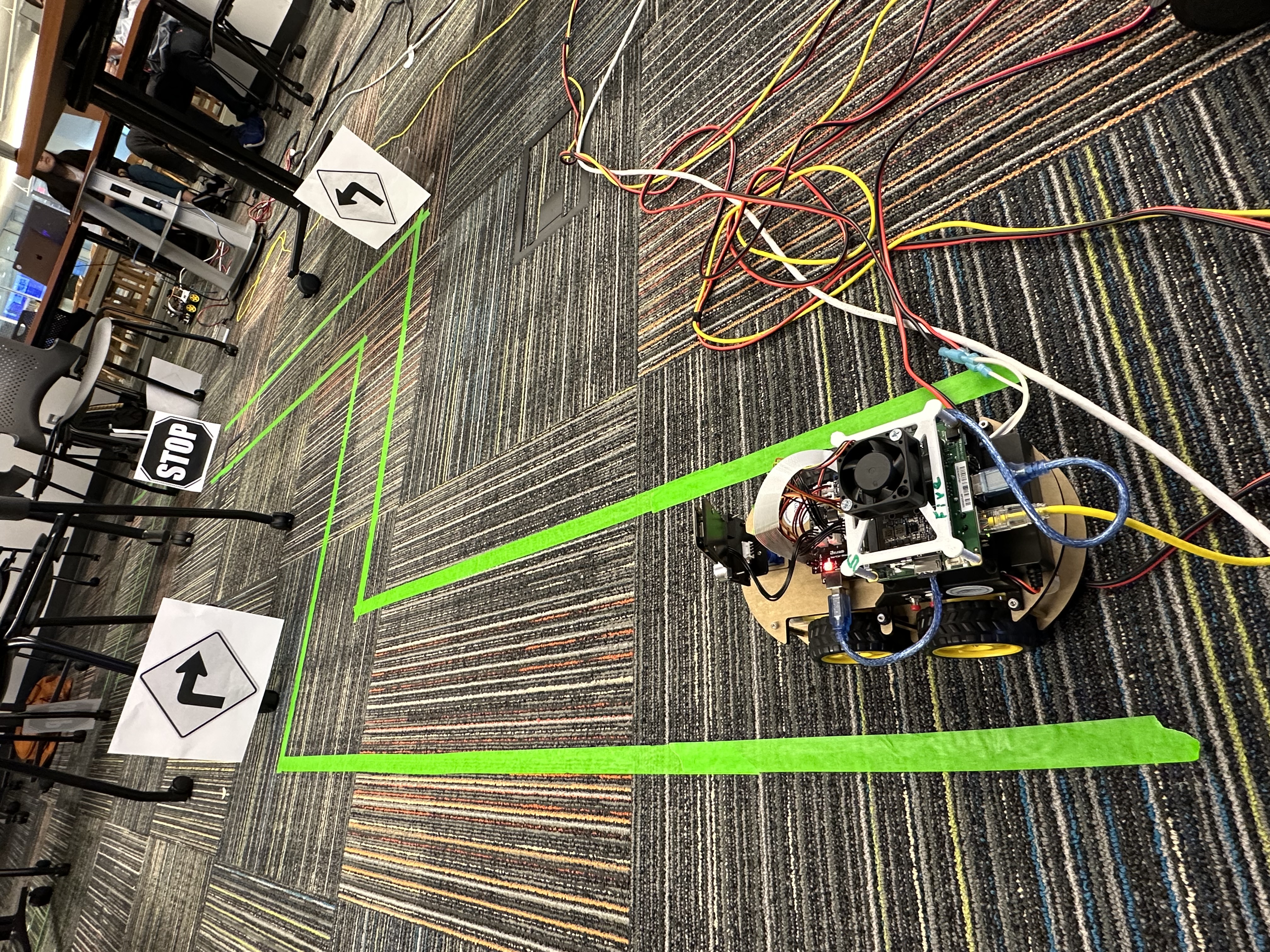AI based self driving car that follows lanes and traffic signs.
The self-driving small automobile in this project showcases a number of cutting-edge technology and programming languages. The vehicle has a number of functions, such as intelligent control systems, lane detection, and traffic sign recognition. A robust and adaptable autonomous car is produced by combining Python, C/C++, numerical libraries, and GPU acceleration. The vehicle is suitable for robotics, computer vision, and other AI-related applications because it is built for IoT integration.
Features:
Lane Detection and Following: To recognize and follow lane markers on the road, the small automobile makes use of computer vision algorithms written in Python and OpenCV. Within the lanes, it is capable of autonomous navigation.
Traffic Sign Recognition: The vehicle uses machine learning methods that are PyTorched-implemented in Python to identify and understand different traffic signs. It can react correctly to various indicators, such as speed limit and stop signs.
Real-Time Processing: To provide prompt replies and dynamic navigation, the automobile makes all calculations and decisions in real-time.
GPU acceleration: The automobile makes use of GPU capacity to deliver high-performance computing, facilitating quicker processing of intricate AI models.
The self-driving automobile is made to operate on embedded technologies, making it small, energy-efficient, and appropriate for real-world use.
Numerical Libraries: The project uses Python's NumPy and SciPy libraries for handling sophisticated mathematical operations.
Remote monitoring and control are made possible through IoT integration, which enables the car to be connected to IoT devices and cloud services.
Robotics: By displaying its capacity to operate autonomously without human involvement, the self-driving car exhibits robotics skills.
Computer Vision: To analyse visual data from cameras and sensors for navigation, the vehicle uses computer vision algorithms.
Intelligent control systems in the car allow it to make judgments depending on sensor inputs and outside influences.
Python dependencies: Due to its rich libraries and high-level programming capabilities, Python is used to implement the project in its entirety.
C/C++: To obtain the best execution speed, certain performance-critical components are implemented in C/C++.
For computer vision applications including lane detection, image processing, and camera calibration, OpenCV is used.
PyTorch: PyTorch is used to train and implement machine learning models, such as those that recognize traffic signs.
Numerical Libraries: For doing sophisticated mathematical computations, libraries like SciPy and NumPy are used.
GPU: The vehicle makes use of GPU acceleration to process AI models more quickly.
Usage:
Connect the little automobile to the necessary hardware, such as the GPUs, cameras, and sensors.
Starting the autonomous vehicle will reveal the video feed with lane detection and traffic sign recognition.
The vehicle will drive itself, staying in its lane and responding to traffic signals.
Integration of IoT and robotics The self-driving small automobile can be integrated with IoT devices and cloud services and is made to be IoT-friendly. It also exhibits robotics potential through autonomous operation.
